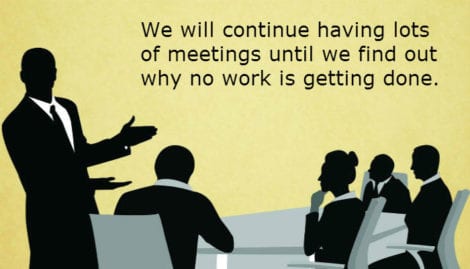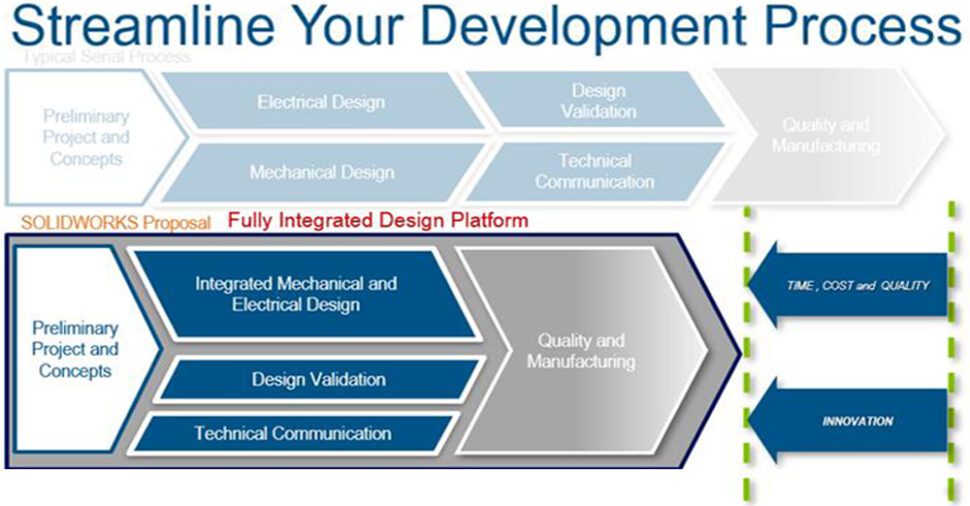How to Reduce Meetings Through Collaboration
I had way too many meetings before SOLIDWORKS Electrical was in my life.
In a past career, I worked as a Systems Engineer. This meant my job was to oversee all aspects of a project and make connections across teams. What this resulted in was daily meetings with each team to determine their status and any scope changes. The answers from one meeting would flow into the next meeting with the next group and so on and so on. By the end of the day, it was my full-time job to make sure that information was getting shared. This was my life before SOLIDWORKS Electrical.

Each meeting had value and distinct requirements. When meeting with the mechanical team, we would discuss the machine footprint, any motion components, lead-time on machined parts, and the bill of materials. When meeting with the electrical team, we would discuss the rating specifications, the power requirements, and any components we had available. When meeting with the manufacturing team, we would discuss how to service specific items, how many panel boxes there are, and how do they interconnect. While they were three distinct conversations, they each involved an overarching goal, which was the project.
Everyone was using different silos and I was stuck in the middle.
It was very frustrating to be the person in the room that had to hear a similar conversation three times a day. I didn’t understand why these three silos existed if they were all working on the same design. Then I realized that each group had its own process and software to do their job. The mechanical team would design their assembly inside of SOLIDWORKS and generate a BOM that tied into the ERP. The electrical team would design their schematic in 2D CAD, create an excel table for their manufacturer parts and import that into the ERP. Finally, the manufacturing team had to wait for a print out of the schematic and SOLIDWORKS drawing before starting.
How SOLIDWORKS Electrical brought everyone together.
Despite having the same goal for the project, we had three isolated processes with me as the go-between. Desperate for a better way, I decided to look into tools that could get all groups collaborating and cooperating as a single entity. Something that would show our electrical components in our mechanical design, provide a unified bill of material, and shift up the time the shop could start assembling. The mechanical team already had all their builds in SOLIDWORKS, so I looked to stay on the same platform. I found that SOLIDWORKS Electrical gave me the ability to have everyone talking to the same project. The electrical designers still created schematics in CAD, but now those symbols linked to a SOLIDWORKS model. It also allowed for the manufacturing team to see the full system design before it was printed. In the end, it reduced my meetings to once a week where we could review as a single team with a single design.

For more information about SOLIDWORKS Electrical, check out the video below. Enjoy reclaiming your meeting time!


















